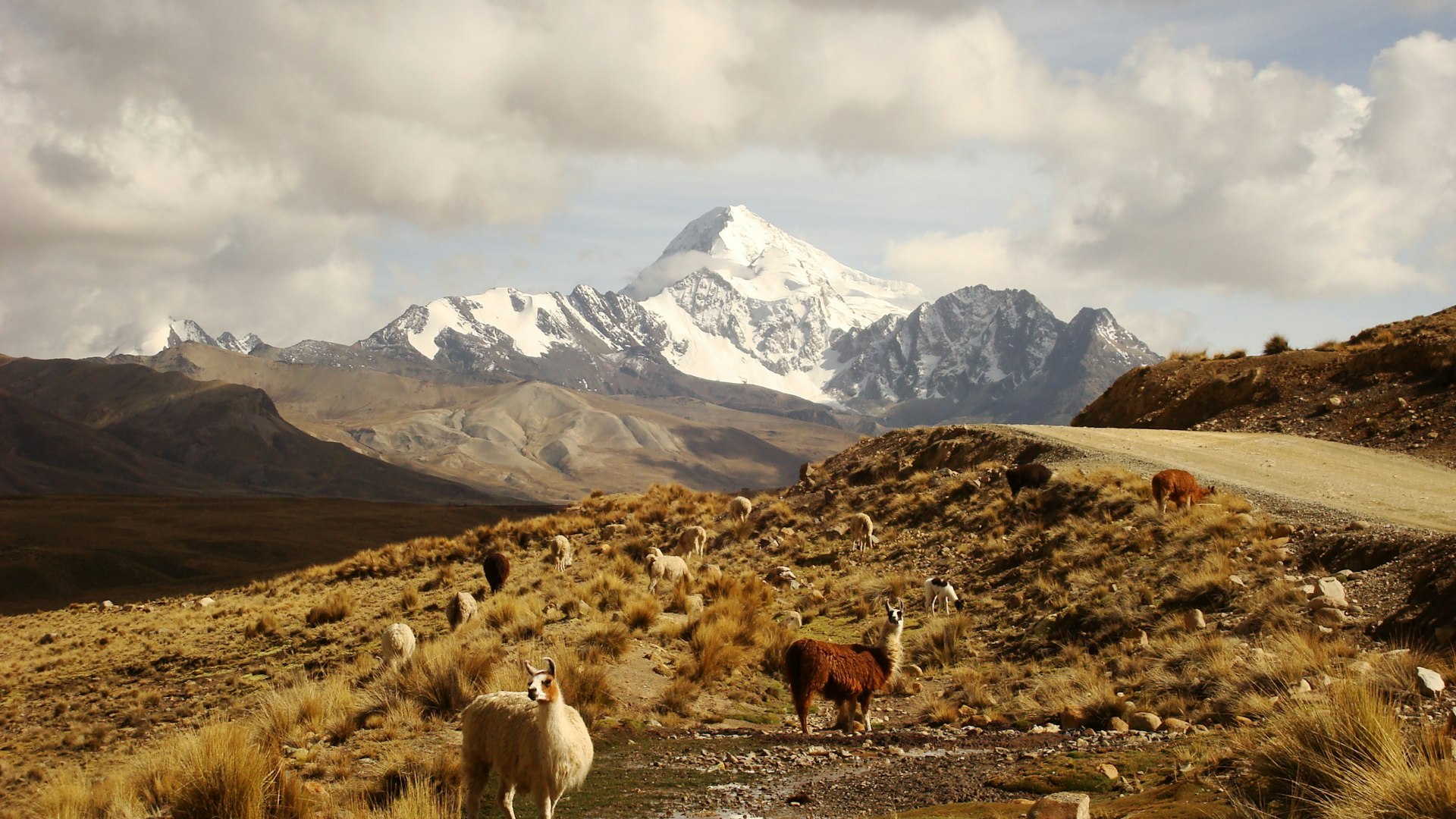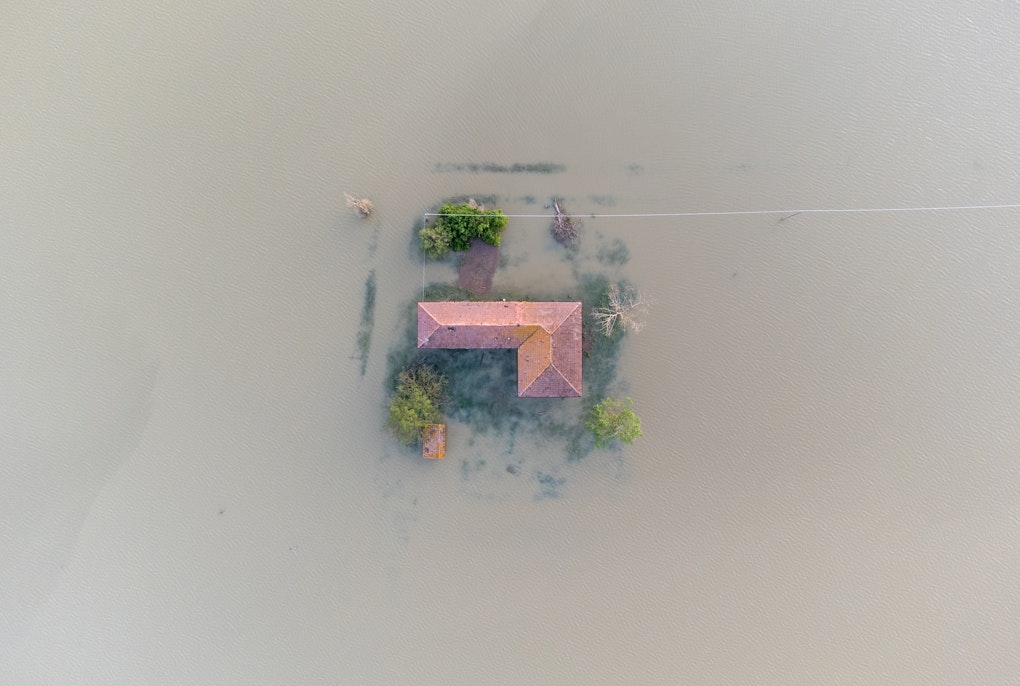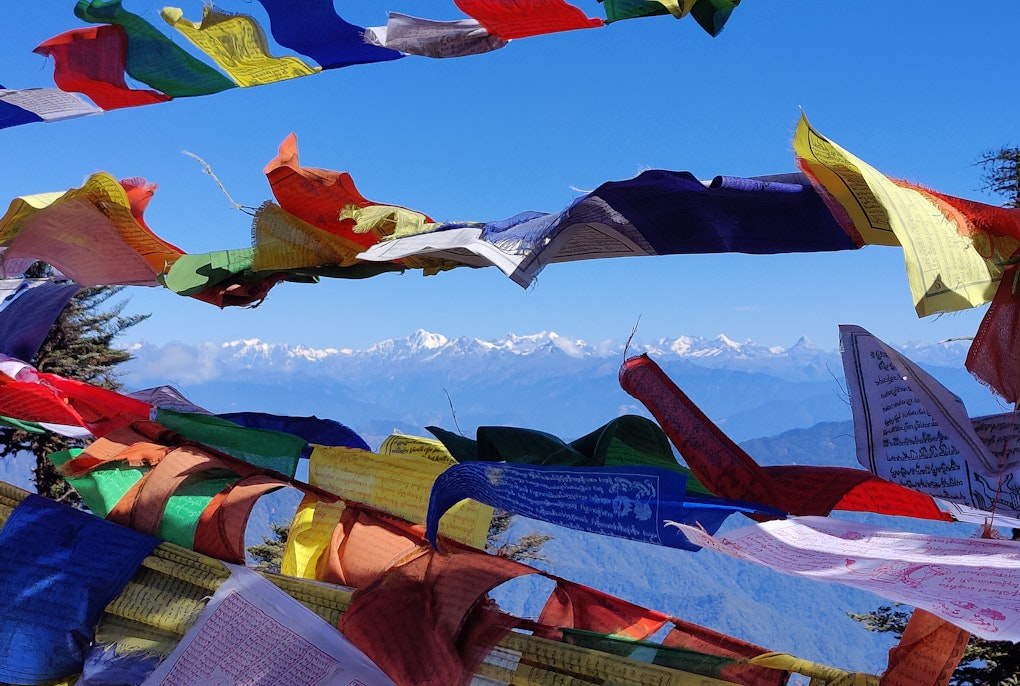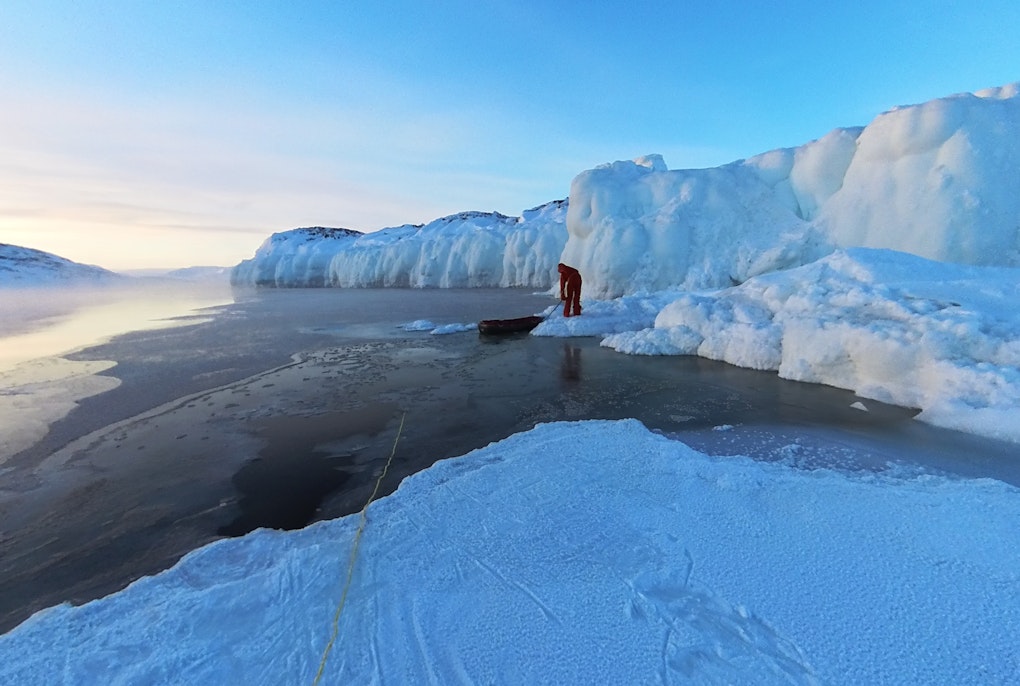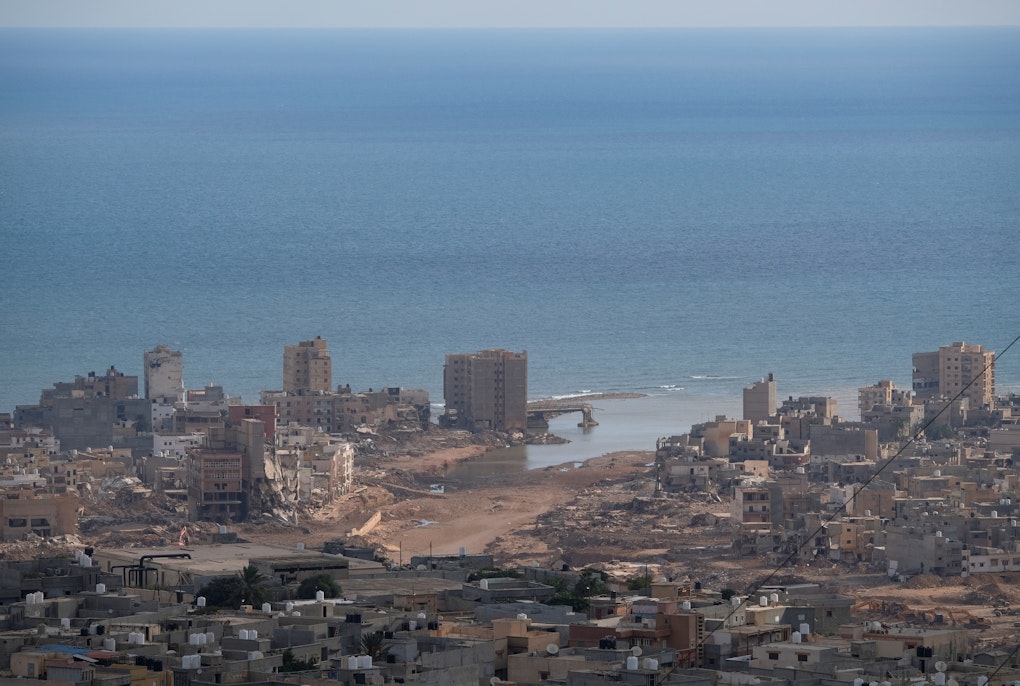magazine_ Interview
"Closing the gap between research and policy"
Climate change adaptation strategies particularly urgent in mountain regions
From the Alps to the Andes. Following our Interregional Training Course on Climate Change Adaptation Strategies for Soil and Water Management in High Mountainous Regions we speak to two of its participants - Stefan Scheiderbaeur and Fabiana Mercado Blanco
Mountains make up 27 percent of the world's land area. And they provide 50 percent of important ecosystem services such as drinking water, to both high and lowland areas. At the same time however, the effects of climate change are particularly acute in mountain regions where temperatures are rising faster than the global average. Among other things, this affects the water balance with local and even continent-wide consequences. Experts from mountain regions around the world came together in a ten-day training course in Bolzano in June 2022 to exchange ideas on adaptation strategies to climate change in the field of soil and water management in mountain areas.
Most of Lake Constance's water, 78 percent, consists of rain and melt water which originates in the Alps. Lake Constance supplies drinking water to around four million people throughout Baden-Württemberg region. This is just one example that illustrates the existential importance of mountain regions for the people that live in their surrounding areas. The Andes range is the origin of the Amazon Basin - the largest tropical wilderness in the world, the most biologically diverse place on Earth, and home to hundreds of indigenous peoples. It is also the largest freshwater system in the world, accounting for 15% of the freshwater discharge into global oceans.
As part of the "Interregional Training Course on Climate Change Adaptation Strategies for Soil and Water Management in High Mountainous Regions", organized by the UN GLOMOS program based at Eurac Research (LINK: https://www.eurac.edu/de/institutes-centers/zentrum-zum-schutz-und-erhalt-von-gebirgsraeumen) and the United Nations University (UNU), we spoke with Stefan Schneiderbauer, head of the GLOMOS program in Bolzano, and Fabiana Mercado Blanco from the Municipal Department of Risk Management in La Paz, Bolivia, about the main challenges in adapting to climate change in mountainous areas.
We know that mountain areas are particularly affected by the impacts of climate change. On the one hand, there are very gloomy forecasts, but on the other, there are also optimistic statements from experts that we will still "get our act together" in time. What are the challenges specifically for the Alps?
Stefan Schneiderbauer: A major challenge worldwide and also for the Alps is certainly the availability and management of water. Temperatures will rise and with them evaporation, precipitation patterns will change, less snow will fall, glaciers will melt, we have more energy in the atmosphere and therefore more heavy precipitation events in a very short period of time - all this makes it more difficult to provide the quantities of water needed for the various economic sectors throughout the year. On top of that - and this is not only a big issue here in the Alps, but also a worldwide one - even if there were sufficient water available for the mountain area itself, in almost all cases "downstream”, large lowland regions rely on water that comes from the mountain areas. Thus, if less water is available and the upland areas use the same amount of water or even more, then water is missing further downstream in the river basin. This has a major impact, for example, on agriculture here in the Alps and also worldwide, consequently on global food security.
Research field trip to Upper Venosta
Could you tell me about the current challenges that are impacting the area of the Andes that you are involved in?
Fabiana Mercado Blanco: The zone contains a lot of high mountains and all of them have snow and also glaciers which are retreating. There’s a lot of snow and hail in Bolivia but over the decades there has been a significant reduction - we have a less water for our cities. 25% of the water supply to the city comes from those Huayna Potosi and Tuni lake. We do have other water supplies, but 25% is a lot - the population is also increasing especially in El Alto. The increase over the past few years has been about 5% - twice the increase of that of the population of La Paz. In the case of Huayna Potosí, it's vital - these resources are precious. With this GLOMOS course on interregional adaptation strategies for soil and water management in high mountain regions we have been preparing some measures not just about the mountains themselves, but which focuses on natural measures of biology, or by biodiversity - working with ecologists to present a plan for the government in Bolivia. From December we will have set up the Cosmic Ray Neutron Sensor (CRNS) which will be utilized for monitoring landscape soil moisture to improve agricultural water-management. Now we have to start with collecting data to show the government the focus of the study and the plans that we have. Before anything – we need to measure and monitor.
What differences are there when you compare the Alps and mountain regions worldwide?
Schneiderbauer: The challenges in the context of climate change are already very similar worldwide. But there are big differences in the possibilities to plan and implement adaptation measures. This starts with information about what is most likely to happen in the next few years. In the Alps, this information is available in detailed form, and the competencies and institutions exist here to draw conclusions from it and to plan and implement measures. In other mountain regions, there is often a lack of financial resources, technical competences and consistent public administration.
How resources are managed in South Tyrol was an important part of the interregional training course.
2022 is the year of Sustainable Mountain Development - how can we involve everyone in protecting these precious environments.
Mercado Blanco: Most people are very conscious that climate change is affecting our ecosystems, but most don’t know how to contribute to mitigation efforts. We have to work, especially with children, to create a pathway and understanding of how to build a sustainable future, we’ve been working on some strategies to teach the people about the impacts of climate change and what to do in these cases in terms of associated and cascading risks. We need teams to analyze the bofedales –the Andean wetlands. The Bofedales are vital in high-altitude land use and ecology, they can either be permanent or seasonal, manmade or natural. The soil in a bofedal retains glacial run-off water, snow, glacier and rain showers storing it in ground and slowly releasing it. For the people that live around in the glacier basin we have to focus on conservation measures, incentives and teach the people who live there what is so important about protecting the bofedal. These basins are a source of livelihood, so they are not only related to our culture but also to our economic survival. Both the Quechua and Aymara work in agriculture, they provide the foods and fruits and other resources to city dwellers, and we are working really close with both of these Bolivian populations. In the highlands it's very dry, agriculture needs to take into account the unique terrain and extreme climatic elements of the area - the most important thing that they produce is potato - all those people are really important to sustain Bolivia.
There is always a risk of "bad adaptation," that is, transferring techniques or measures from one area to another, but which can then have negative consequences. One example of this is reforestation.
Stefan Schneiderbauer, Head of the GLOMOS Program Bolzano
Are there solutions and strategies that work well here that can be transferred to other mountain regions?
Schneiderbauer: There are, of course, however they are usually very context-specific. And in order to come up with these solutions for the particular mountain areas, you have to look at the different areas that you have to work on until you get to the adaptation measure; there are different steps here, for each of which there are approaches, tools, and techniques that you can transfer to other areas as well. There is this big gap between science and users, and here, of course, there are ways to close that gap and support collaboration. And these approaches, which include, for example, raising awareness of authorities and their ability to integrate results of science into their work, can be transferred well. But great care must always be taken to ensure that it is appropriate to local conditions. This is because there is always a risk of "bad adaptation." One example is afforestation, which has been prominently communicated in the media in recent years, namely that you can do a lot of climate protection by “creating” forests by planting trees. That's certainly an excellent measure in many places. But in other areas, such as in the higher altitudes of the mountains in South Africa, where we were recently on site and where we are also conducting research, we see that this afforestation can have very negative consequences in the original grasslands in mountain regions. Because such afforestation upsets the whole ecosystem there. It supports the immigration of invasive species and leads to the displacement of the autochthonous grasses with extremely negative consequences for the carbon balance, biodiversity and the ability of the soils to store water.
From the conference, were there any mitigation strategies that are working well that you would like to transfer to the Bolivian Andes?
Mercado Blanco: Yes, working on measures for adaption to climate change by not just focusing on civil structures but on how to place the focus on natural things. Or things that we can do at a low cost that represent a lot of money in savings, analyzing ecosystems and ecophysiology. We have a lot of different ecosystems that exist side by side, that's why we need to monitor them and involve the local community to know how to map these unique features and start working with us not only in the monitoring but in the protection of the beauty and the biology in these ecosystems. The communities need to be involved.
Participants from around the world came together to discuss mitigation strategies. The course was coordinated by GLOMOS.
We have a lot of different ecosystems that exist side by side, that's why we need to monitor them and involve the local community to know how to map these unique features and start working with us not only in the monitoring but in the protection of the beauty and the biology in these ecosystems. The communities need to be involved.
Fabiana Mercado Blanco Fabiana, risk assessment manager for the Autonomous Government of La Paz in Bolivia
What can we in the Alps learn from other areas?
Schneiderbauer: We can learn a lot from others, especially in the area of responsibility. I think we are very much characterized by the fact that we have and can have a great deal of trust in our authorities, so that personal responsibility is rather small. In other areas, this sometimes looks quite different, where people have to take on much more responsibility themselves because they know that they cannot rely on the authorities. I think in general we are very well positioned, but in detail there is a lot of room for improvement. The issue of climate change, for example, has become more prominent over the course of the last few years, but it is still nowhere near the level it needs to be to accept measures whose implementation will have a real tangible impact on our region.
What else will you take away from this training course?
Mercado Blanco: My work is in risk management. And to hear about in-place RM protocol here was important because we are bolstering risk management in La Paz, Bolivia to improve what we have there already, there’s a lot of problems related to our geodynamic movement caused by so many rivers in the city. There was an earthquake and the biggest flood that the region had experienced in 1998 that killed hundreds and decimated many buildings. SENAMHI - Servicio Nacional de Meteorología e Hidrología is the unit in charge of the technical management of meteorological activities, they carry out national meteorological surveillance, coordinate the elaboration of meteorological forecasts and alerts and carry out the monitoring of satellite, conventional and automatic weather stations. Apart from the communication of risks and hazards by SENAHMI, we make full use of social media, TV, radio and now we are even using WhatsApp. The most common risks in La Paz city are landslides. We have a lot of houses on very steep terrain which are extremely vulnerable to these particular factors. And then there's the cascade of risk, power supplies, accessibility...It's our real life. We have approximately 346 rivers in La Paz. So most of them are underground and they form networks that cross the entire city underground, we have to constantly monitor this threat. At the course, I saw a lot of things that we can do to create a ‘risk culture’ among the population and increase resilience towards hazards. Transparent participation in risk governance processes is key and will increase our risk competence, enhance safety and strengthen solidarity.
International impacts
Interregional Training Course on Climate Change Adaptation Strategies for Soil and Water Management in High Mountainous Regions
11 experts from mountain regions around the world - Chile, Argentina, Bolivia, Nepal, Pakistan, Peru - met in Bolzano from June 7 to 17, 2022, in the framework of the international training course. The aim was to familiarize the participants with the necessary tools as well as steps for planning adaptation measures to climate change at the regional and local level.
About the Interviewed
Fabiana Mercado Blanco is a Civil Engineer with Master Degrees from Fukushima University (Soil Erosion Due to Climate Change), La Escuela Abierta de Desarrollo en Ingeniería y Construcción (EADIC - UDIMA)Spain EXPLOTACION DE OBRAS HIDRAULICAS (Hydraulics Buildings Explotation). She has been serving her home country Bolivia for the past ten years as an executive manager of a multiyear and multimillion-dollar Disaster Risk Reduction and Resilience Building program funded by a loan from the Inter-American Development Bank (IDB) to the government of Bolivia, implemented by the Ministry of Environment and Water. Presently, Fabiana manages the Risk Assessment division of the Autonomous Government of La Paz in Bolivia. She designs, monitors, and implements programs for the implementation of resilience building and early warning systems focused on the Geo dynamic movements risks that occur on the steepest slopes of the city. Fabiana believes that every action we take has risks. Our role as world citizens is to find ways to minimize them and build resilience! https://www.canva.com/design/DAFEnUnMLuQ/i8g5kJc1oNLvCzZS706a3Q/edit
About the Interviewed
Stefan Schneiderbauer is a geographer and has been working in the field of (climate) risk management in mountain areas for more than 20 years. He studied in Cologne, Berlin and Louvain-La-Neuve (Belgium) and leads the GLOMOS program at the Eurac Research Center for the University of the UN, which supports the conservation and sustainable development of mountain areas worldwide.
